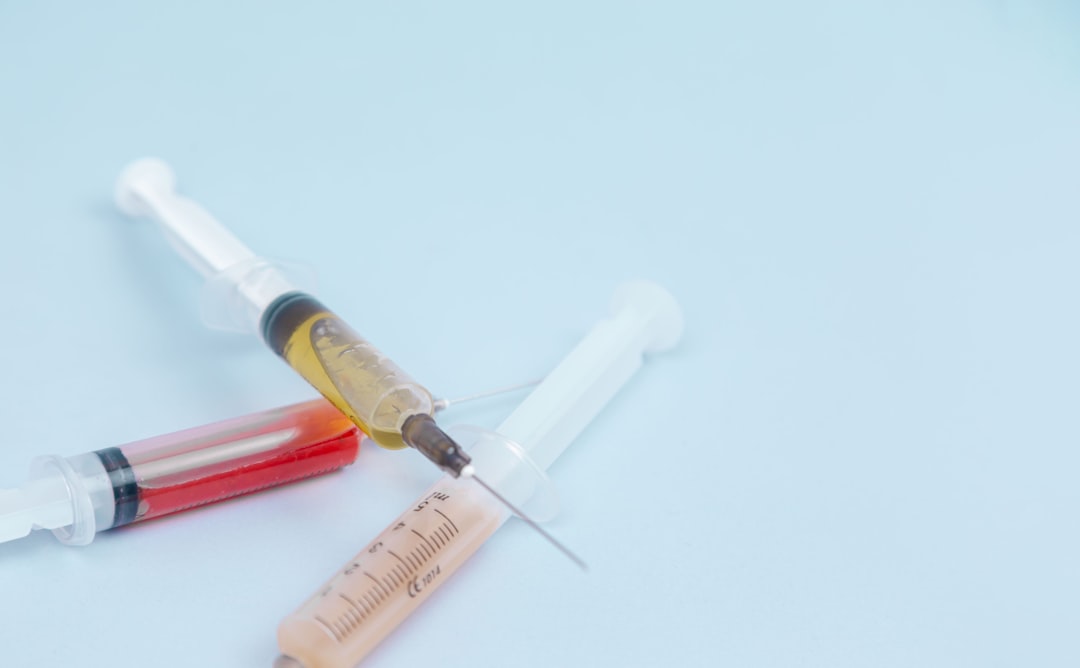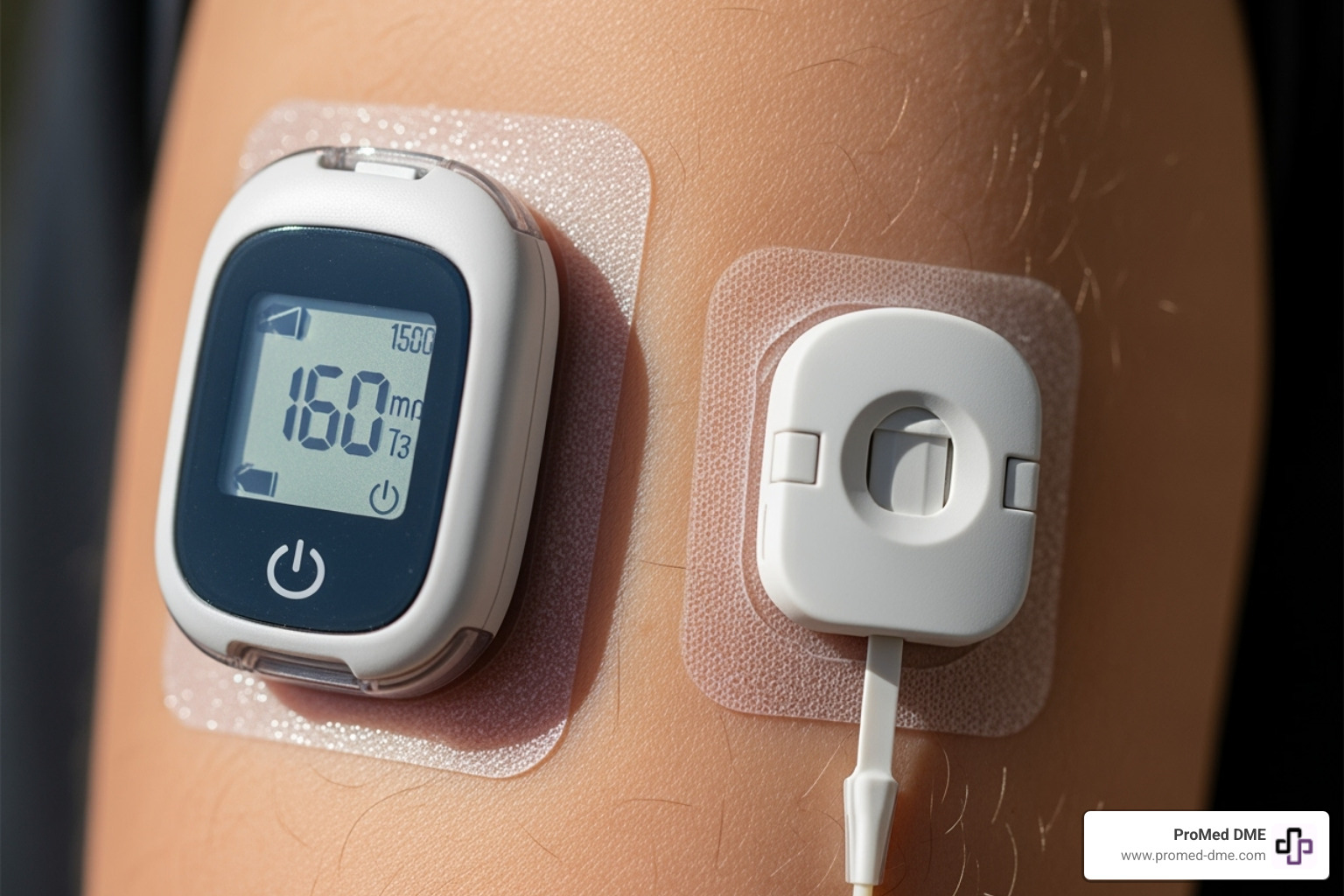Insulin Pump Innovations: What's New and What's Next?
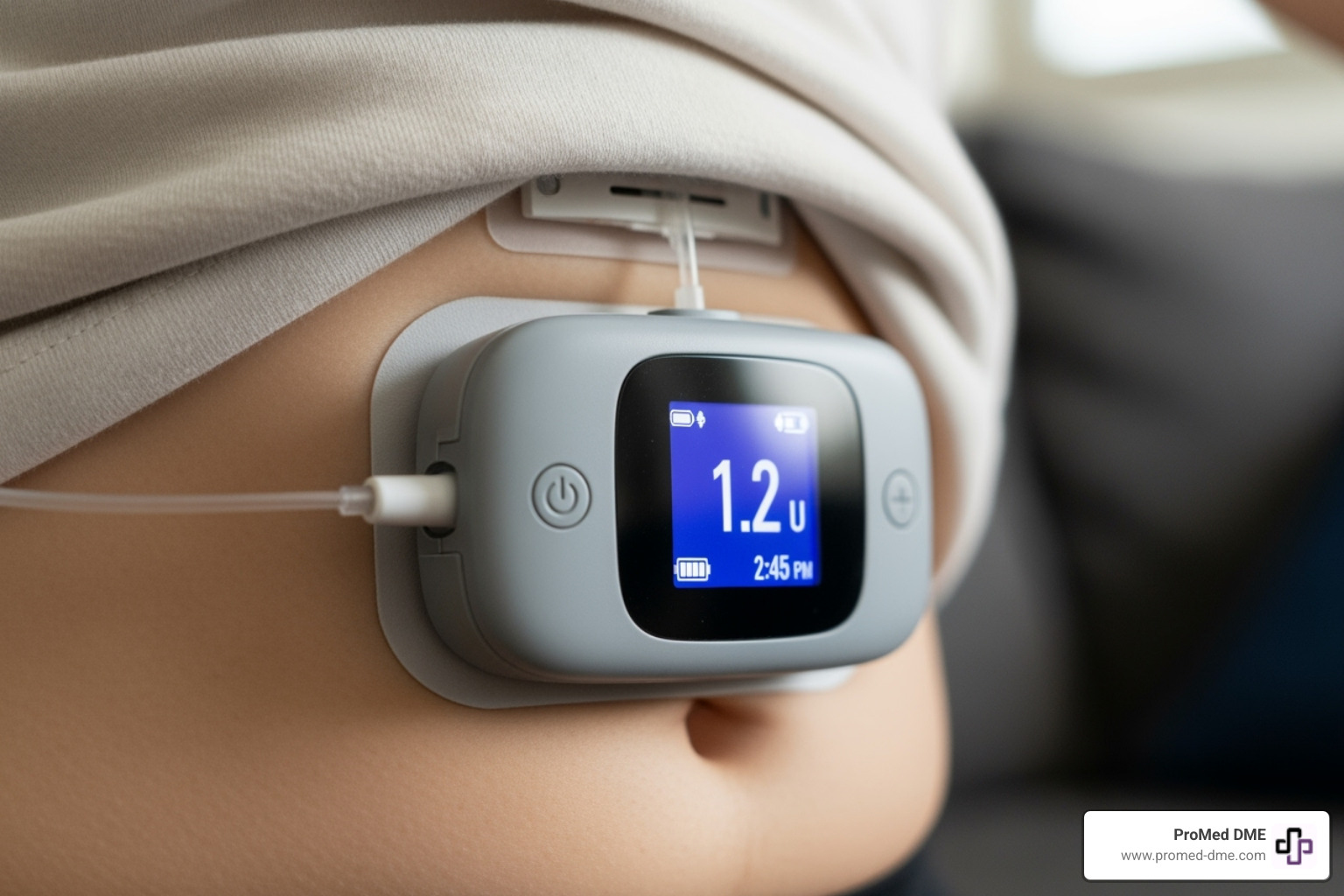
Why New Insulin Pumps Are Revolutionizing Diabetes Care
New insulin pumps are changing diabetes management with smarter automation, smaller designs, and better connectivity. The latest generation of pumps offers features like meal detection technology, smartphone control, and extended-wear systems that make daily life easier for people with diabetes.
The newest insulin pumps available or soon to be released include:
- Tandem Mobi - World's smallest automated insulin delivery system, fully controlled by iPhone
- Medtronic MiniMed 780G - Features meal detection technology with 5-minute auto-corrections
- Omnipod 5 - Tubeless system with smartphone control and waterproof design
- Beta Bionics iLet - Bionic pancreas system with dual-hormone capability
- Ypsomed mylife Loop - Hybrid closed-loop system with extended infusion sets
These systems represent a major leap forward, using automated insulin delivery (AID) technology to predict glucose levels and automatically adjust insulin every 5 minutes. This means fewer finger sticks, less manual calculation, and more time in your target glucose range. The diabetes technology market, valued at over $16 billion, is rapidly evolving. As Tandem Diabetes CEO John Sheridan notes about their new Mobi pump, they're "testing the limits of pump miniaturization," making devices more discreet and effective than ever.
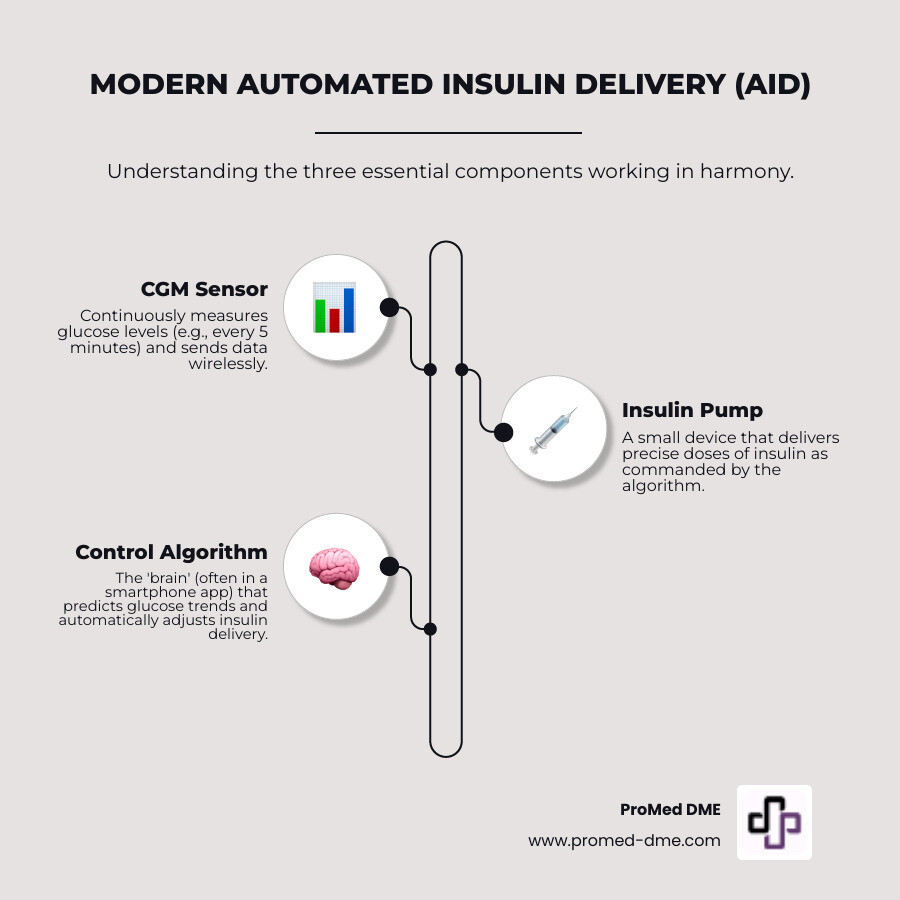
Handy new insulin pumps terms:
The Next Wave of New Insulin Pumps: Key Innovations to Watch
The latest new insulin pumps are more than minor upgrades; they reimagine insulin therapy to make life easier and healthier for people with diabetes. Let's explore the key innovations.
The Rise of Ultra-Discreet and Wearable Pumps
Bulky insulin pumps are a thing of the past. The newest generation is so small and discreet you might forget you're wearing one.
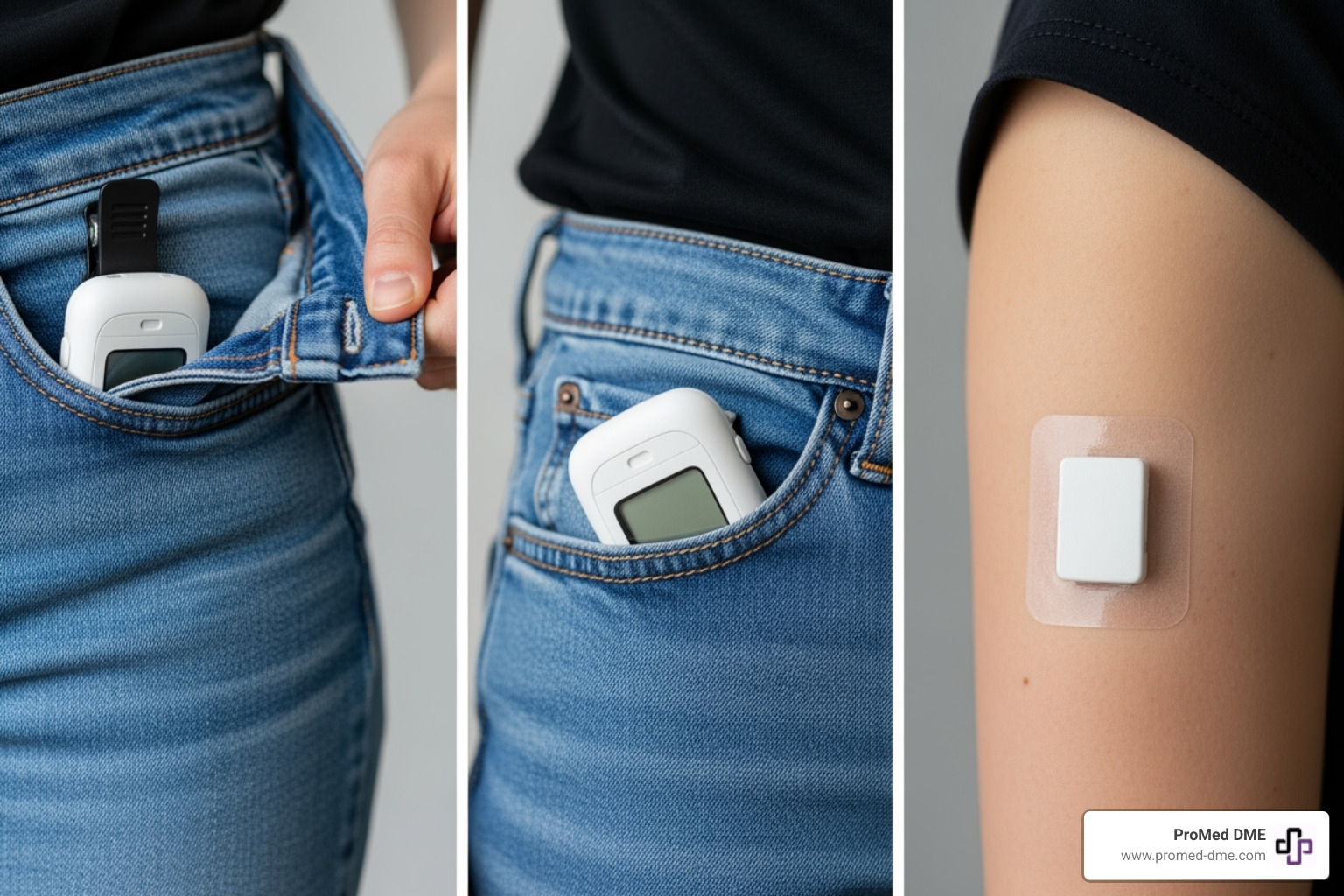
The Tandem Mobi, for example, is small enough to fit in a coin pocket. It can be worn, clipped, or slipped almost anywhere. This miniaturization is possible thanks to smartphone control. The Tandem Mobi is the only automated insulin delivery system fully controllable via an iPhone, eliminating the need for a bulky screen or buttons on the device itself. Its 200-unit capacity balances a small size with practical daily use.
Bluetooth connectivity seamlessly links the pump, continuous glucose monitor, and smartphone. With systems like the Dexcom G7, you can even get a direct connection to the Apple Watch without needing your iPhone nearby. Even with tubing, these modern tubed pumps are incredibly discreet and easily hidden under clothing.
Smarter Automation with Meal Detection Technology
New insulin pumps are smart enough to help with common mistakes like miscalculating carbs or forgetting a bolus.
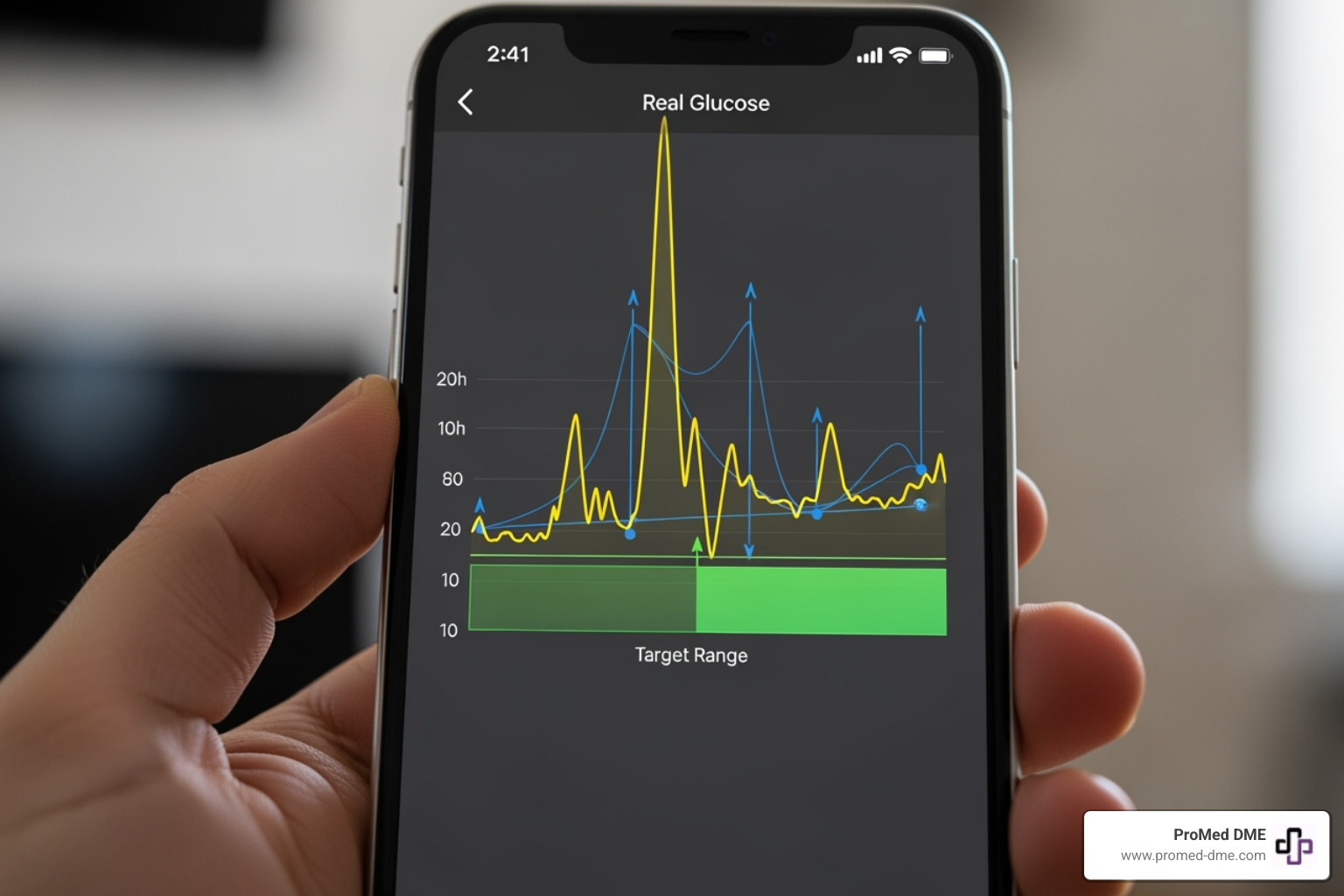
The Medtronic MiniMed 780G system features Meal Detection Technology that acts as a safety net. It makes 5-minute adjustments and delivers auto-correction bolus doses as needed. This provides true mealtime freedom and forgiveness for carb miscalculations. The system's SmartGuard technology allows for personalized glucose targets as low as 5.5 mmol/L, helping users spend about 76% of their time in range. This significant improvement in Time in Range can lead to fewer long-term complications. Sophisticated algorithms predict glucose levels 30 minutes ahead and make automatic insulin adjustments to keep you on track.
Advancements in Tubeless and Extended-Wear Systems
Comfort and convenience in pump therapy have improved dramatically. Tubeless systems and extended-wear infusion sets address common complaints about traditional pumps.
Tubeless pump therapy offers several benefits: no tubing to snag or tangle, waterproof pods for swimming and showering, discreet patch pumps that sit on the skin, and reduced site changes.
The Omnipod system is a prime example, with its waterproof pods worn for up to 3 days and controlled by a remote control device.
Even tubed systems are improving. Medtronic's breakthrough 7-day infusion sets with iCURADRIVE technology double the wear time of traditional sets. This means fewer site changes, less skin irritation, and more convenience. The trend toward smaller, smarter, and more comfortable pumps, like the world's smallest insulin pump granted FDA clearance, is making diabetes management more convenient than ever.
How Automated Insulin Delivery (AID) is Getting Smarter
The brain behind new insulin pumps is the Automated Insulin Delivery (AID) system, or hybrid closed-loop. This technology makes thousands of daily decisions to keep your blood sugar in range, changing diabetes management from a constant effort into a more automated process.
Predictive Algorithms and Automatic Adjustments
Smart AID systems predict glucose levels up to 30 minutes ahead, allowing them to act proactively rather than reactively.
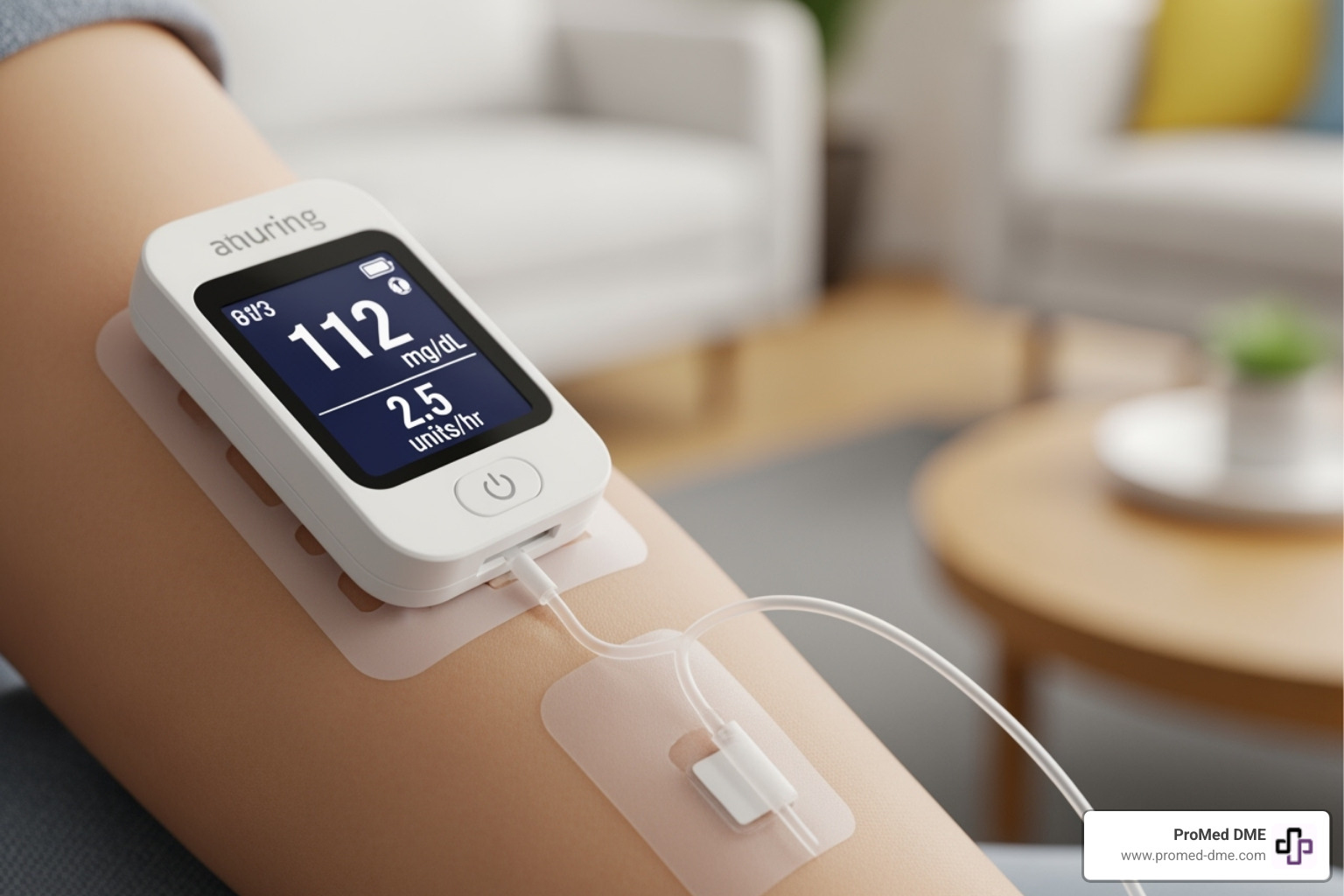
Tandem's Control-IQ technology, for example, predicts glucose levels 30 minutes ahead and automatically adjusts insulin, delivering correction boluses up to once per hour as needed. It also features dedicated settings for Sleep and Exercise Activities. For low blood sugar prevention, Basal-IQ technology predicts glucose levels 30 minutes ahead and suspends insulin if levels are expected to drop below 80 mg/dL, reducing time spent below 70 mg/dL by 31%.
Medtronic's MiniMed 780G automatically adjusts and corrects sugars every 5 minutes. If your glucose is trending high, it gives more insulin; if trending low, it gives less or no insulin. This constant fine-tuning leads to better glucose control. As validated by scientific research on automated insulin delivery, automated insulin delivery (AID) is becoming the standard of care.
Seamless Integration with CGMs and Smartphone Apps
Modern new insulin pumps are part of a connected ecosystem with continuous glucose monitors (CGMs) and smartphone apps. All pumps available in the U.S. today integrate with CGM, using real-time glucose data to inform insulin delivery. With CGMs like the Dexcom G7, you get no fingersticks required for calibration and a fast 30-minute warmup time. The G7 can also connect seamlessly with more health apps and devices, including a direct connection to Apple Watch without needing your iPhone nearby.
Your smartphone acts as a command center. The Tandem Mobi offers full phone control via its mobile app (iPhone), while other systems like the Medtronic MiniMed 780G and Tandem t:slim X2 use apps for data viewing and limited control, like mobile bolusing.
A key feature is remote software updates. Pumps like the Tandem t:slim X2 and Mobi can receive feature updates remotely, meaning the device gets smarter over time without new hardware. Data management platforms like Glooko and Tidepool help users and providers review data, while caregiver 'follow' functionality (available on Medtronic and Dexcom apps) allows up to 10 care partners to monitor glucose levels in real-time.
| Feature | Pumps with Full Smartphone Control (e.g., Tandem Mobi) | Pumps with Data Viewing / Limited Control (e.g., Medtronic 780G, Tandem t:slim X2) |
|---|---|---|
| Control via Phone | Yes (full pump functions) | Limited (e.g., bolus from phone, view data) |
| Pump Screen | Minimal or None | Full-featured screen on pump |
| Primary Interface | Smartphone app | Pump device itself, supplemented by app |
| Remote Updates | Yes | Yes (for compatible models) |
| Caregiver Follow | Yes | Yes |
| Data Upload | Via app to cloud | Via app to cloud or direct from pump |
Expanding Access for the Type 2 Diabetes Population
Insulin pump therapy, once primarily for Type 1 diabetes, is now seeing expanded access for the Type 2 diabetes population. Medtronic is pursuing an FDA submission for its MiniMed 780G for Type 2 and has a collaboration with Abbott that could address over 2 million Type 2 patients. As Medtronic's CEO Geoff Martha notes, this population needs the full benefits of automated insulin delivery, as CGM alone is just not sufficient.
Innovations are also targeting Type 2 needs with devices like smart insulin pens (e.g., Medtronic's InPen) and basal-only patch pumps, which offer simplified insulin delivery. Core technologies are also expanding, with the Dexcom G7 CGM already approved for people with Type 2 Diabetes. This broader accessibility provides more options for the growing diabetes community.
Is It Time to Switch? Benefits and Key Considerations
Deciding to switch to one of the latest new insulin pumps is a personal journey. It's about changing how you manage diabetes daily, so let's explore what this change could mean for you.
Key Benefits of Upgrading Your Pump
Upgrading to a modern insulin pump can be life-changing. The key benefits include:
- Improved Time in Range (TIR): Users of systems like the Medtronic 780G and Tandem Control-IQ report spending 74-76% of their time in range, which is up to 2.6 more hours per day in their target zone.
- Better HbA1c levels: Clinical studies show significant reductions, such as a 1.4% reduction in HbA1C with the Medtronic 780G system, without increasing hypoglycemia.
- Reduced mental burden: With the pump handling many tasks automatically, users report they can "switch off my mind to all the thoughts about control & treatment" and enjoy mealtime freedom.
- Fewer injections: Switching from multiple daily injections can mean a reduction in injections by up to 90%.
- Increased lifestyle flexibility: Waterproof and discreet pumps allow for more freedom in activities, sports, and even fashion choices.
- Improved safety: Advanced algorithms with features like "Predictive Low Glucose Suspend" provide a critical safety net to "help prevent highs and lows."
What to Consider Before Making a Change
Switching to a new insulin pump is a significant decision that requires a conversation with your healthcare team. Here are key factors to consider:
- Insurance coverage: Most insurance plans, including Medicare, cover insulin pumps. Your out-of-pocket cost will vary. For example, a pump with a list price around $9,915 might have start-up costs of $5–$1,260 after insurance, with ongoing supplies running $0–$200 per month. At ProMed DME, we work with most insurance plans to minimize your costs.
- Training requirements: You will receive comprehensive training from a dedicated support team to ensure you are confident with your new device.
- Data management preferences: Consider how you want to interact with your data, whether through simple reports or in-depth analysis software like Glooko or Tidepool.
- Tubed vs. tubeless systems: This is a personal choice based on lifestyle. Tubed pumps (Tandem) can be temporarily disconnected, while tubeless pumps (Omnipod) offer more freedom of movement and are waterproof.
When you're ready, talk to your provider or use resources like the ADCES finder tool to find certified diabetes educators for guidance.
Frequently Asked Questions about New Insulin Pumps
Here are clear, helpful answers to some of the most common inquiries about new insulin pumps.
How much do new insulin pumps cost?
The cost of new insulin pumps is often more manageable than the list price suggests. Your actual out-of-pocket costs will likely be much lower, depending on your insurance coverage.
Many new insulin pumps, including the Medtronic MiniMed 780G, are now Medicare covered. Medicare Part B typically covers 80% after the deductible for the pump and supplies, as they are considered Durable Medical Equipment (DME).
For those with commercial insurance, many financial assistance programs and monthly payment programs are available from manufacturers. Some offer upgrade programs, like Medtronic's Switch2System program, where users of other in-warranty pumps can upgrade to the 780G for just $499.
The ongoing cost of pump and supplies is another important factor. While the initial investment might range from $5–$1,260 after insurance, ongoing supplies typically run $0–$200 per month. A CGM like the Dexcom G7 might cost around $35 per month with commercial insurance.
Navigating these costs can be confusing. At ProMed DME, we work with most insurance plans to help minimize your expenses. We have a nurse on staff who can help you understand your coverage and find the most affordable solution.
Are the newest pumps approved for children?
Yes, many new insulin pumps are approved for children, and the age limits are becoming more inclusive. FDA approvals vary by device:
- The Tandem Mobi is FDA approved for ages 6+.
- The Medtronic MiniMed 780G is approved for use by patients age 7-80 years in the U.S.
- The Omnipod system is approved for various age groups, starting from 2 years and over.
- CGMs like the Dexcom G7 are approved for use in people aged 2 years and older.
This means even very young children can benefit from the latest technology. The most important step is a pediatric endocrinologist consultation. They can determine the most suitable pump system and advise on any feature locks for safety for younger users.
How do I get started with a new insulin pump?
Getting started with a new insulin pump is a structured process. The journey begins with your healthcare team, as a prescription is required. During an endocrinologist consultation, they'll assess your medical needs and suitability for pump therapy.
Next, you'll partner with a reliable DME supplier like ProMed DME. Our team will handle insurance verification and discuss out-of-pocket costs upfront. We work with most insurance plans, including Medicare, and our nurse on staff can advocate for you throughout the process.
Pump training is the final step. This comprehensive education, often involving a Certified Diabetes Care and Education Specialist (CDCES), ensures you're comfortable and confident using your new device. Our support continues after you receive your pump, with ongoing resources available to help you succeed.
Conclusion: Embracing the Future of Diabetes Management
The world of diabetes technology is moving faster than ever. The new insulin pumps we've explored represent a genuine leap forward—they're smarter, smaller, and more connected than anything we've seen before.
These advanced systems work quietly in the background, predicting glucose trends and making adjustments to keep you in your target range with less effort. Miniaturization has led to pumps that fit in a coin pocket, while tubeless systems and extended-wear sets add new levels of convenience. These are game-changers that let you focus on living your life.
Encouragingly, these technologies are becoming more accessible, with approvals for younger age groups and expanded coverage for Type 2 diabetes. The future of diabetes management is not just getting better—it's becoming available to more people who need it.
Making the switch to a new insulin pump is a big decision, and having the right support makes all the difference. At ProMed DME, we're committed to making the process as smooth as possible with our top-quality products and exceptional customer service.
Our dedicated nurse on staff is available to answer your questions and guide you. We offer free shipping nationwide and work with most insurance plans to keep your out-of-pocket costs as low as possible. We believe that managing diabetes well shouldn't mean navigating complicated processes alone.
Whether you're ready to explore your options or just want to learn more, we're here to help. For more information about pump benefit programs and how we can support your diabetes journey, visit promed-dme.com.
The future of diabetes management is here. With the right technology and support team, you can accept it with confidence.
Recursos y artículos relacionados
Manténgase informado con las entradas de nuestro blog informativo.
Descubra las ventajas de ProMed
y pruebe nuestros productos
Ofrecemos envío gratuito y un legendario servicio de atención al cliente para garantizar que reciba los
mejores productos de DME para sus necesidades.


